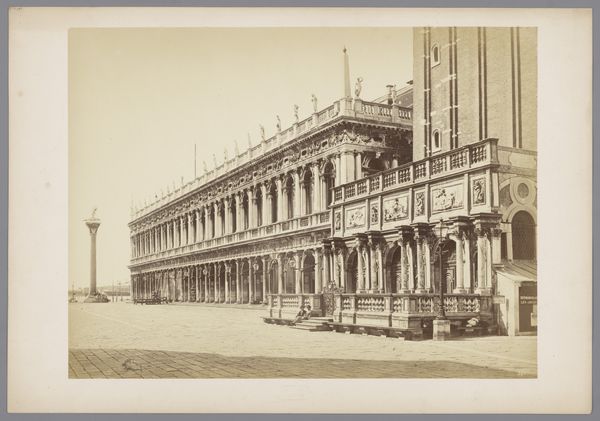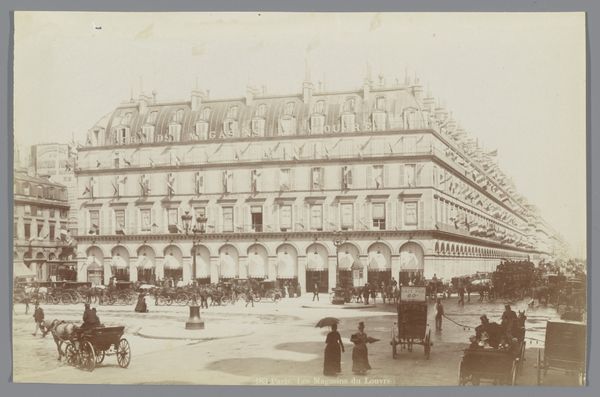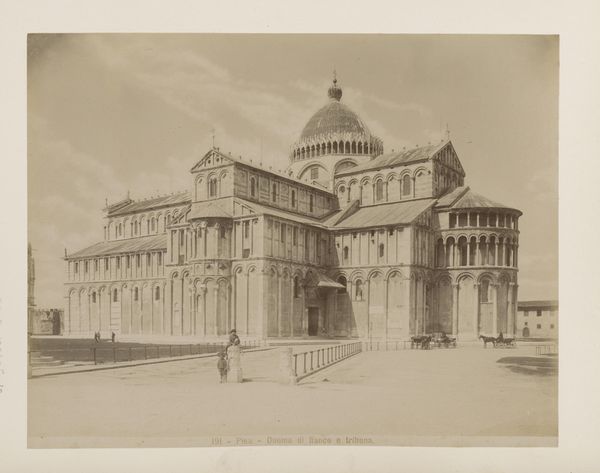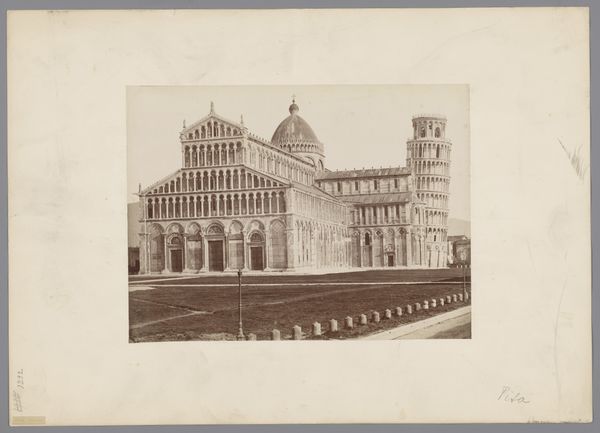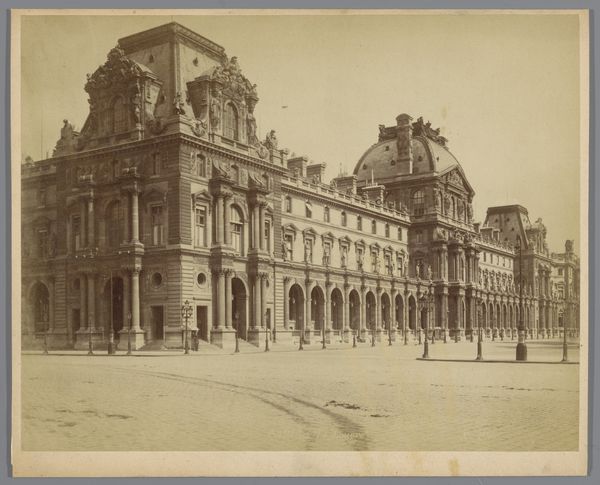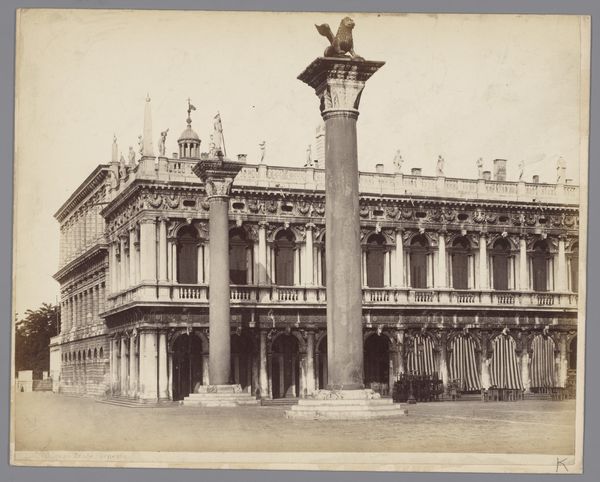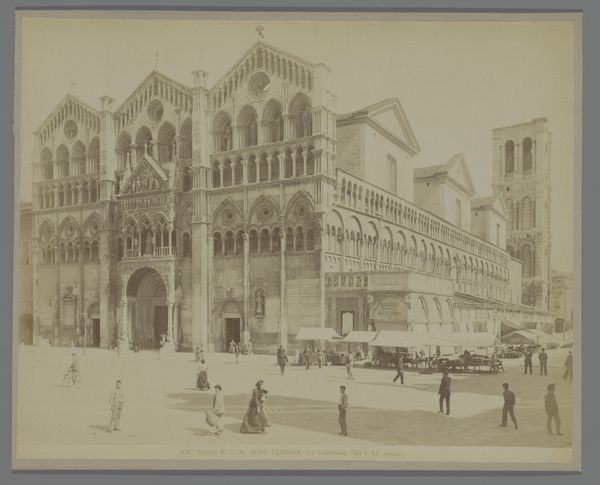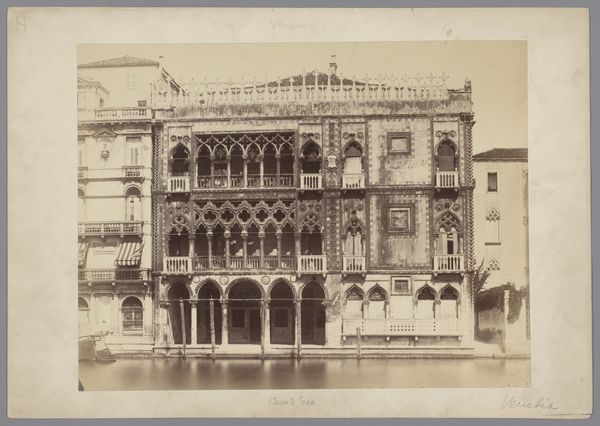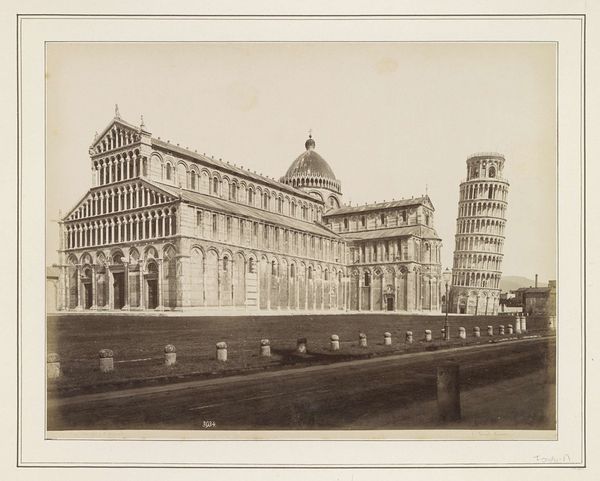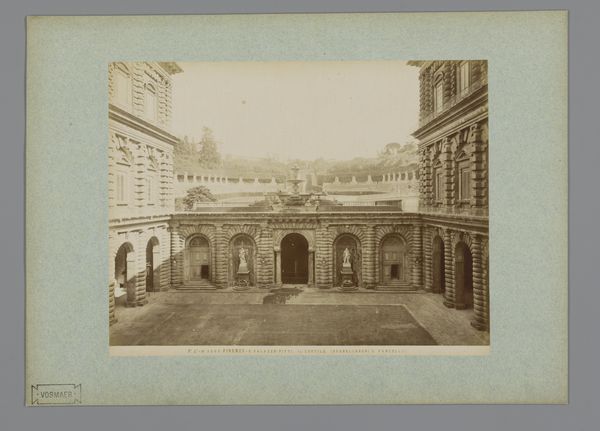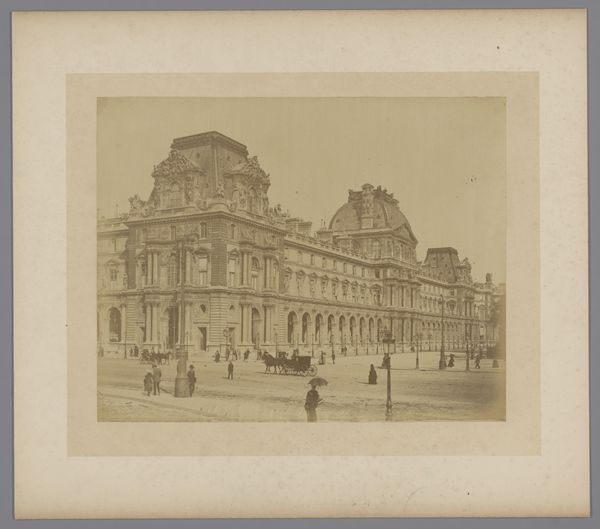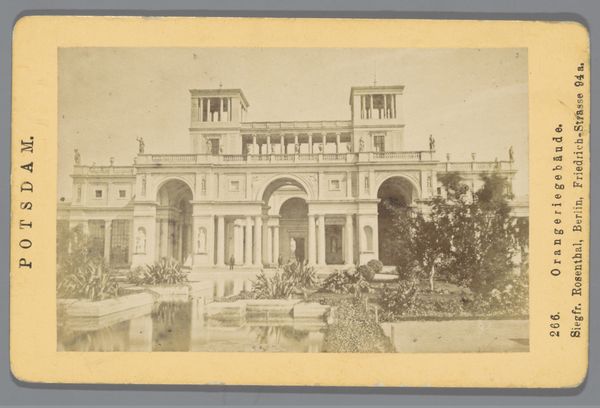
print, photography, gelatin-silver-print, architecture
# print
#
landscape
#
photography
#
gelatin-silver-print
#
cityscape
#
architecture
Copyright: Public domain
Editor: So this is "Facade of the Duomo Pisa," a gelatin silver print by Roberto Rive from around 1870. It captures the Duomo and the famous leaning tower in Pisa. It feels very documentary, like an objective record. What strikes you about this particular image? Curator: What jumps out at me is the labor implicit within it. We see the grandeur of the Duomo, a product of immense coordinated human effort across centuries. But the photograph itself also represents a kind of industrial process. Editor: An industrial process? Curator: Yes, consider the wet plate collodion process likely used here. It involved the meticulous preparation of glass plates, coating them with light-sensitive chemicals right before exposure. Think about the photographer lugging his darkroom equipment around – it was quite a feat of material and technical knowledge, and physical endurance. Editor: So, even capturing this static image was a labor-intensive undertaking? Curator: Exactly. It's a snapshot of immense cultural capital, this Duomo, but also a testament to the material constraints and technological capabilities of photography in the 19th century. Notice the scaffolding on the Duomo. What does that imply to you? Editor: I guess it suggests constant maintenance and ongoing work needed to preserve these grand structures, reinforcing your point about labor. I hadn’t thought of photography that way, as being a physical endeavor that's part of the whole material process. Curator: Precisely. It pushes us to see photography not just as art, but as a form of material production, intertwined with the social and economic contexts of its time. Editor: That's a fascinating way to look at it! I'll definitely be more aware of the production aspect of photography moving forward.
Comments
No comments
Be the first to comment and join the conversation on the ultimate creative platform.
